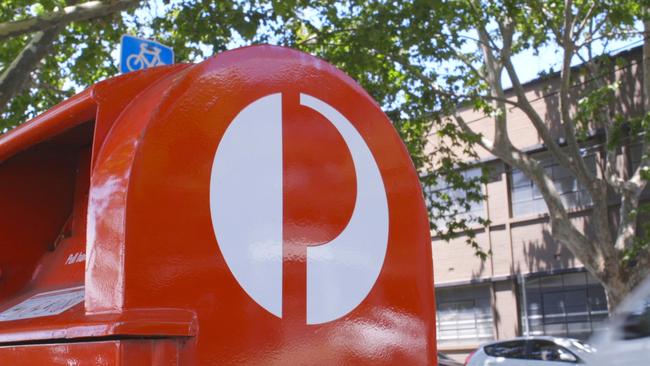Postal union disputes claimed decline in letter volumes
Posties have cast doubt on chief executive Christine Holgate’s claim that the coronavirus pandemic has halved letter volumes.

Posties have cast doubt on their chief executive Christine Holgate’s claim that the coronavirus pandemic has halved letter volumes, saying the decline is closer to 15 per cent.
The Communication Workers Union, which represents postal workers, will today hold a teleconference with Australia Post management to seek verification on the fall in letter volumes and gain more detail about how Ms Holgate plans to move 2000 posties from bikes to vans to clear a backlog of parcels.
The CWU says it was blindsided by the Morrison government last week granting Australia Post a temporary suspension from its community service obligations, which stipulates it must run a five-day-a-week letter delivery service.
The suspension has allowed Australia Post to deliver letters every second business day, instead of daily, in metropolitan areas and to push out delivery times on interstate routes. The postal service has also withdrawn its more expensive priority mail product and says it can no longer guarantee next day delivery for Express Post.
Ms Holgate argued the relief was necessary, citing an 80 per cent spike in parcel deliveries in the past month as social distancing fuels an online shopping bonanza. She said the postal service had struggled from the grounding of most of Qantas’s passenger fleet, which it relies on to deliver online shopping orders across the country, while at the same time letter volumes had halved.
But Victorian CWU branch secretary Leroy Lazaro said while letter volumes had declined during the COVID-19 pandemic, the fall had not been as great as 50 per cent.
“From what we are hearing from our members the letter volume has not dropped to the extent of what is being said,” Mr Lazaro said, adding posties would know if their work had halved.
“I do understand that the UMS (unaddressed mail), magazines and catalogues etc has dropped drastically because of (companies) not having enough to advertise for and the fact that many shops are closed.
“But in real letter volumes, in which we talk about standard letters, I don’t think that has dropped to the extent that Australia Post is making it out to be.
“More realistically it is around the 14-15 per cent that those letter volumes have dropped.”
Letter writing has had a resurgence in some parts of the community, with letter composition part of the curriculum for home-schooling, while nursing homes have called on the young to send letters to the elderly to help maintain social connections.
But mail sent between consumers only accounts for 3 per cent of all letters sent, with business and government comprising the bulk with items such as bills, bank statements and Medicare information.
Mr Lazaro said the union was surprised at Australia Post’s decision to axe the priority product, which makes up 12 per cent of total letter volumes but costs 45 per cent more than a standard letter and does not require the same level of sorting.
“Even though they may say priority volumes are limited, it’s very profitable to Australia Post because it is already done by the mailing houses and sent to Australia Post to run it once on the machine to get it sequenced. The amount of processing needed by Australia Post is limited.”
Mr Lazaro said the CWU had been in regular discussions with Australia Post, particularly about ensuring posties kept delivering mail. He said the union was not consulted about Ms Holgate’s plan to redeploy 2000 posties from standard duties.




To join the conversation, please log in. Don't have an account? Register
Join the conversation, you are commenting as Logout